LED
In the city of Como (where we lived) there were 2 specialized stores. One is quite tiny, but it is by the lamps. They trade “noouncem”, no Osramov, Filipsov and Samsungov. The most common are the SDL of Life.For the trial, I bought this:
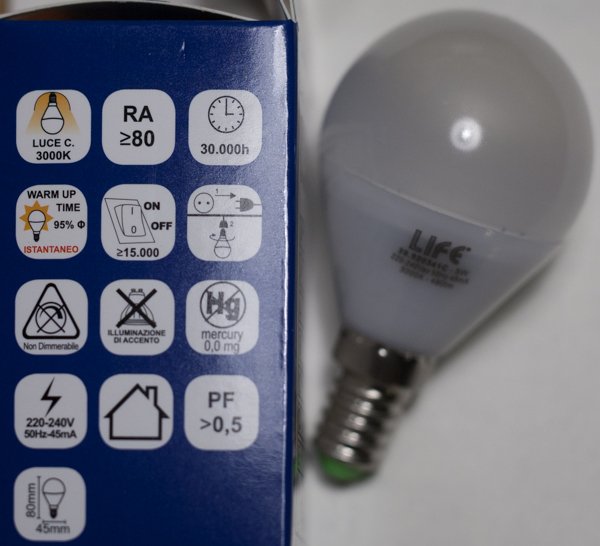
The properties are stated good, but the price is quite high – 7 euros. I do not speak about evaluation methods, see my previous articles on this topic.
The table below shows the information for the lamp (data from the packaging) Life 5W 490lm 39.920341C G45 E14:
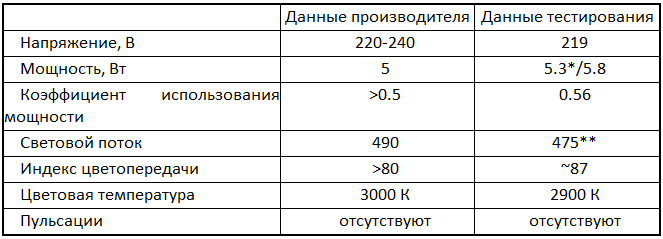
* – After warming up for 21 minutes.
** – According to the luxmeter in comparison with the model lamp of 60 W.
It is pleased with the high value of the color rendering index. Which, moreover, is confirmed visually (see separate article) through the spectroscope:
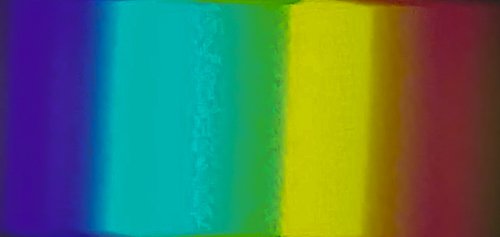
Transition characteristics (power, illumination and temperature) look like this:
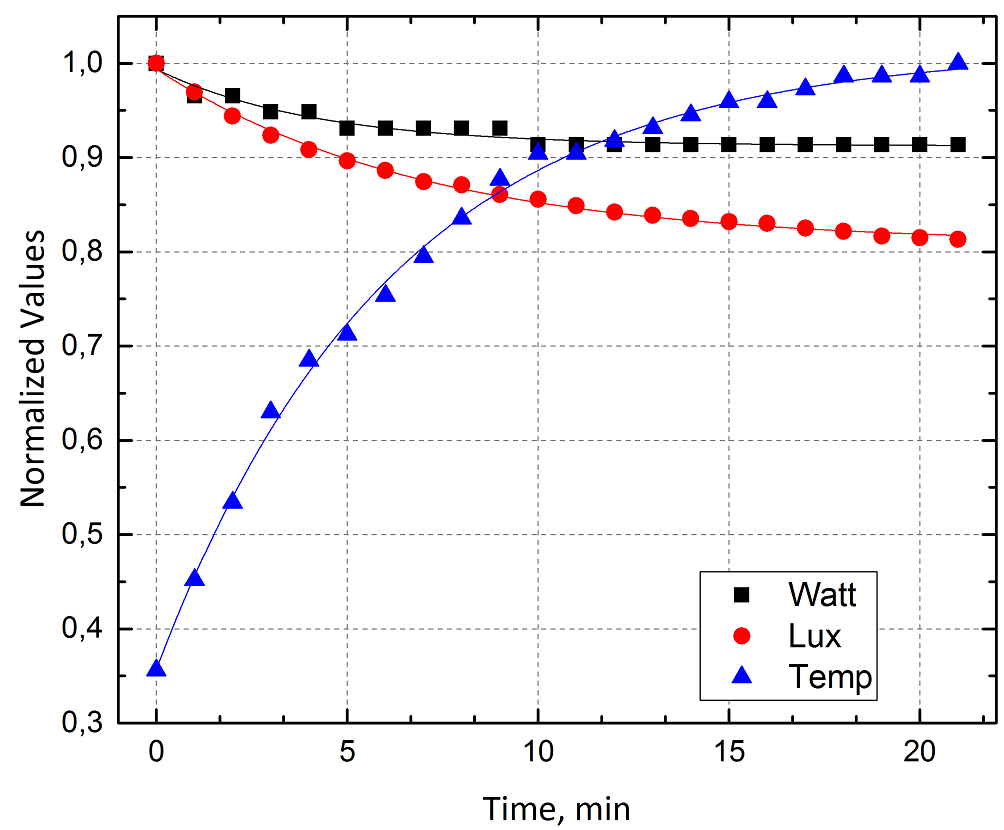
The reduction in electric power is less than 9%, looks excellent. The main thing is that the absolute value of the power after the warm-up was 5.3 W (I will remind, the nominal value is 5 W). The decrease in illumination (ie, in fact, the light flux) by 19% is quite a lot, but the luminous flux from the already heated lamp was 475 lm at 490. It is interesting that the estimation of the luminous flux with a camera (for details, The book) in this case gives a very large error in about the other side, it turns out already 700 lm (which can not be, because it can not be ever). Therefore, I estimated the luminous flux according to the luxmeter readings in comparison with a standard lamp. At the same time, the declared service life is 30000 hours (3 years warranty).
In general, this lamp greatly pleased me. It remains only to be envious of the Italians. The most curious thing is that on the packaging and on the bulb of the lamp is written directly Made in CHINA (just like that, in large letters). In this case, the customer and distributor is an Italian company. This is just an example of what can be achieved from Chinese manufacturers with the right approach and careful control. (I do not know who designed this lamp, but – I suspect – what the Italians did)
The second store is a “supermarket” of electronics. SDL there are the most usual “noimeem”, all Chinese, so I did not buy anything. In general, as I noticed, the larger and more versatile the store, the worse there is the assortment of a certain commodity group.
One day we went to the city of Monza (this is 25 minutes by train). Actually, we were there interested in the biggest outlet in Italy of the company Adidas. But nearby, as it turned out, is a small wholesale store of electrical products. Italians generally have such a system, when members of a certain “shop” have client cards in certain semi-closed stores. When I worked in Milan, one colleague had such a card in the computer shop and accessories. And due to this I did a small business institute and ordered computers for him, and he bought them in small wholesale, on which he had 10%. Yes, there is a small wholesale store of electrical goods through the fence with the Adidas outlet.
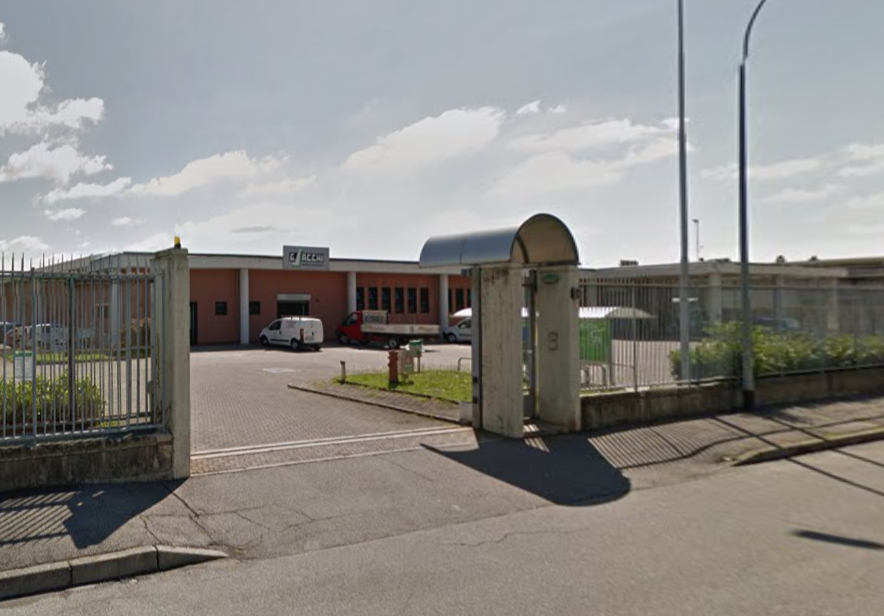
This is a frame from Google Maps in Street View. If anyone suddenly needs, the address Monza, Via della Giardina, 19.
Inside me they did not let me, because I’m not a member of the guild (I do not have a card). But the seller kindly agreed to take out the best quality SOM from the availability. These were the lamps of the firms Osram and Phillips, and all kinds of denominations. Naturally, I could not stand it and bought a dimmable Philips lamp with a power of 8.5 W for 10 euros.
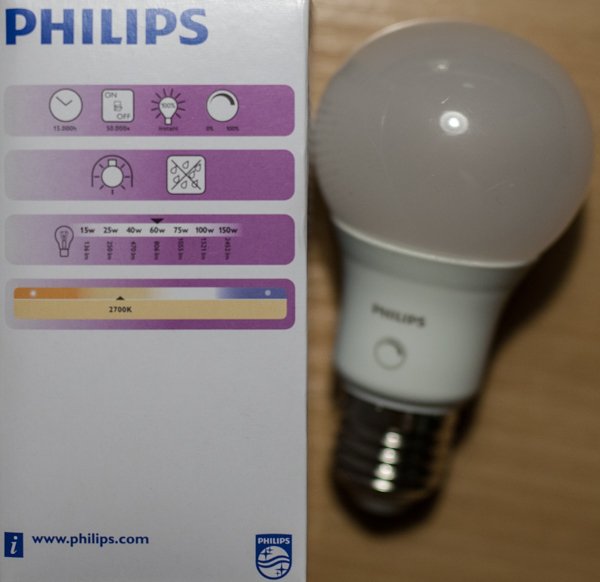
(The first time I see such a fractional denomination and the first time I test dimmable SDL.)
The lamp is peculiar – the service life is indicated 15000 hours (the previous one, recall, 30 000), while the number of cycles of switching on / off is 50 000. Obviously, this The number of cycles is due to the use of the dimming driver.
The table below shows the information for the lamp (data from the packaging) Philips CorePro LEDbulb 8.5 806 lm:
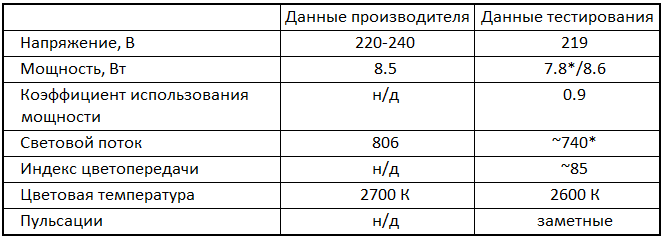
* – After warming up for 21 minutes.
Attention is drawn to the very high power utilization factor. I attribute some shortage of the light flux to the fact that the voltage in our network is rarely equal to 230 V. The spectrum of the lamp as a whole correlates with the high value of the color rendering index:
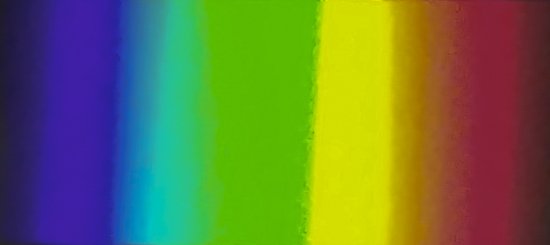
Transition characteristics (power, illumination and temperature) look like this:
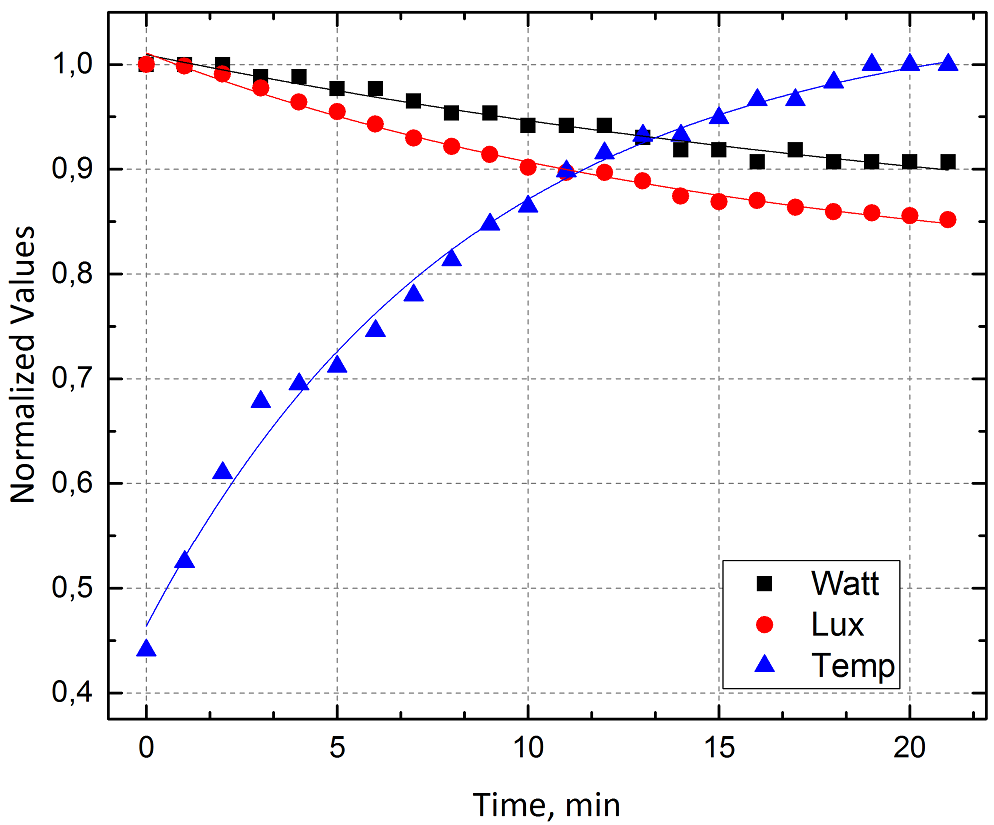
The shape of the power and light curves is somewhat different (not a pure exponent). A 9% reduction in electrical power looks strange to me. First, the power of 8.5 is declared, and after warm-up, there is a 7.8W. Secondly, I simply did not expect that on dimmable lamps the power drop during heating is the same as for conventional SOMs (see the first described lamp above). The fall in illumination (ie, in fact, the light flux) by 15% – within reasonable limits (although, again, I expected more from the dimmable bulb of a well-known manufacturer).
In addition, quite strong pulsations are noticeable through the smartphone’s camera:
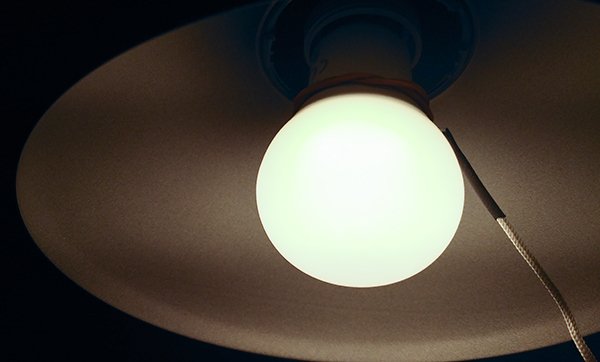
(Horizontal dark and light lines).
In conclusion, I will show what is written on the packaging of this lamp:
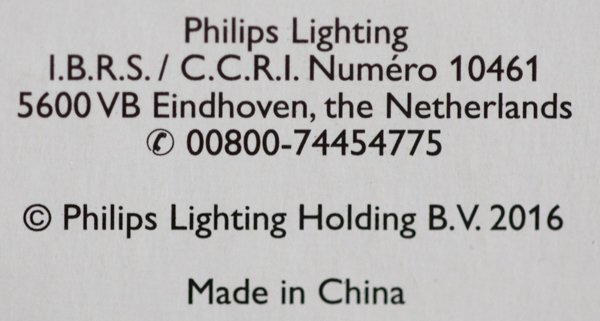
It’s me that there are persistent talk about the fact that Philips is completely “sold out” to the Chinese (I’m on the SOM unit). According to this package / photo, it turns out that this is not the case (including the year 2016 in copyright).
Finally, one day we wandered into the expensive boutique of lighting equipment: sconces, wall and desk lamps, outdoor And table lamps, etc. All this, incidentally, is very immodest. A banal table lamp on the LED – about 300 euros. Of course, the LEDs are very decent there, but the hand does not pay so much money.
Yes, so several SOMs were on sale at the cash desk for sale. One of them I was very interested in already its appearance:
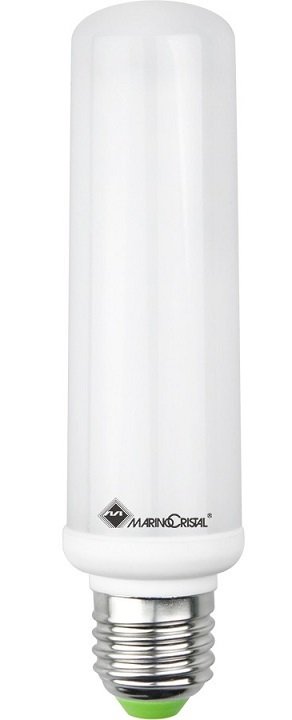
(photo from the manufacturer’s site)
It turned out that in a tiny republic San Marino (which Italians stubbornly consider part of Italy) has its own producer of lamps. On the link you will find detailed specifications. They are impressive.
There is a dimming lamp at 13 W 56 euros. I would have found this amount (which you will not do for a hobby) – but I could not figure out what the manufacturer promised 40,000 hours of work (a 4 year warranty). The flask is closed tightly. I was thinking about the blown phosphor – but on the manufacturer’s website no details. Make a quality film of a phosphor of this size and such a complex shape on the bubble well, it’s very difficult. Reference is made to the SD of Epistar. But then it’s just tightly covered with matte scatterer filaments (the banal “corn” is quite unlike). That they do not seem to work that long.
So there will not be a test, just keep in mind that there are such variants.
Summarize my impressions : With LED lamps in Italy, the situation is quite good. Better than in Spain (last year I did a similar review, but then on another resource in the form of a replica on the forum). The usual lamps in the ordinary store are a bit expensive, but of very decent quality. And if you want, it’s easy enough to find good lamps from recognized manufacturers.
As far as I know the Italians (and I’ve worked in Italy many times), this is just a manifestation of their national character. You can treat them differently, they have many shortcomings. But they really respect themselves. Not in words – but in deeds, which is expressed as consumer goods. Italian food, clothing, furniture – they just do not allow bad goods to appear on the shelves of their stores (even on the shelves of street bazaars). Dilute the cheese with palm oil to get more money out of the pockets of their compatriots, it never even occurs to them …








